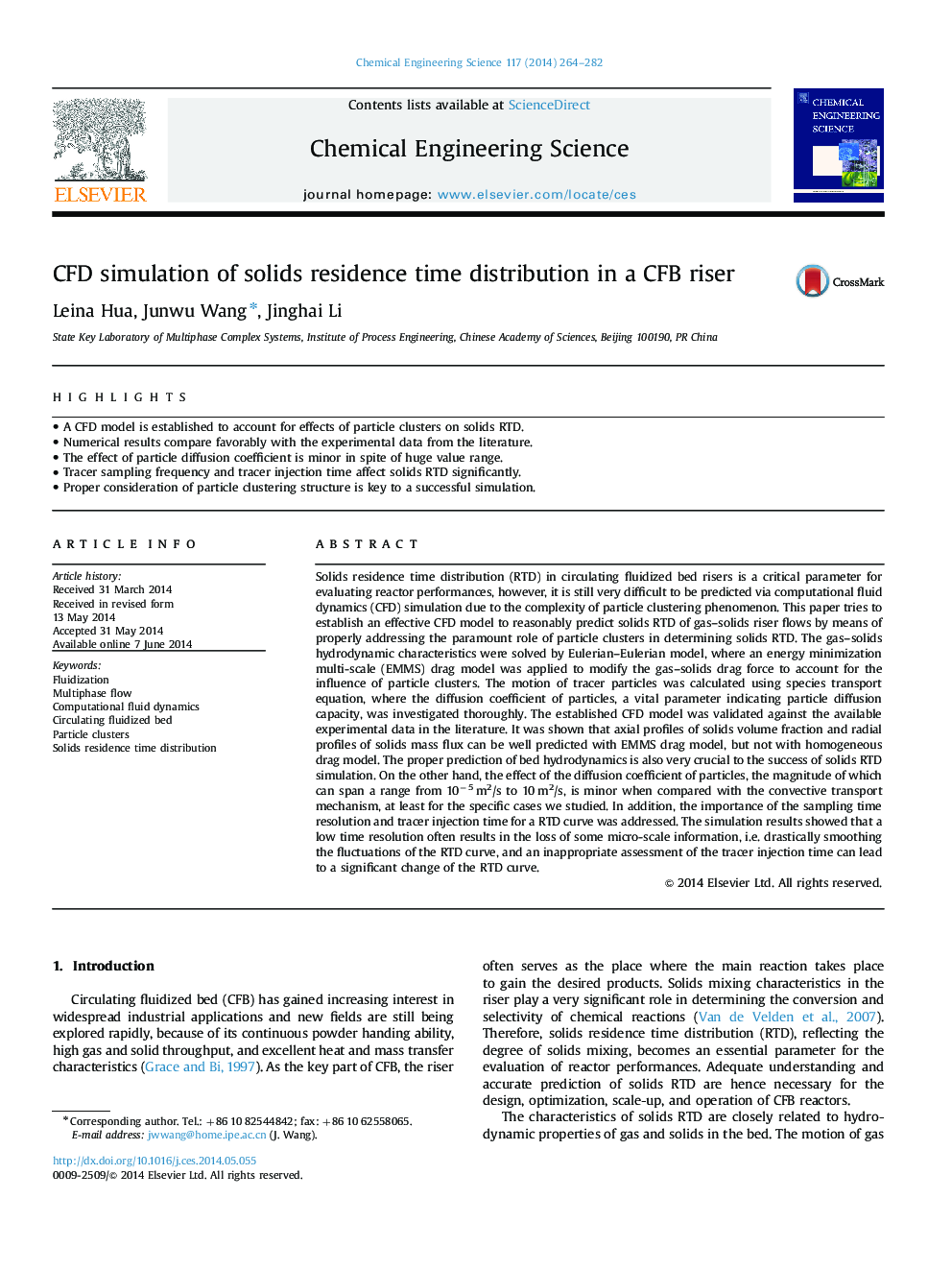| Article ID | Journal | Published Year | Pages | File Type |
|---|---|---|---|---|
| 154818 | Chemical Engineering Science | 2014 | 19 Pages |
•A CFD model is established to account for effects of particle clusters on solids RTD.•Numerical results compare favorably with the experimental data from the literature.•The effect of particle diffusion coefficient is minor in spite of huge value range.•Tracer sampling frequency and tracer injection time affect solids RTD significantly.•Proper consideration of particle clustering structure is key to a successful simulation.
Solids residence time distribution (RTD) in circulating fluidized bed risers is a critical parameter for evaluating reactor performances, however, it is still very difficult to be predicted via computational fluid dynamics (CFD) simulation due to the complexity of particle clustering phenomenon. This paper tries to establish an effective CFD model to reasonably predict solids RTD of gas–solids riser flows by means of properly addressing the paramount role of particle clusters in determining solids RTD. The gas–solids hydrodynamic characteristics were solved by Eulerian–Eulerian model, where an energy minimization multi-scale (EMMS) drag model was applied to modify the gas–solids drag force to account for the influence of particle clusters. The motion of tracer particles was calculated using species transport equation, where the diffusion coefficient of particles, a vital parameter indicating particle diffusion capacity, was investigated thoroughly. The established CFD model was validated against the available experimental data in the literature. It was shown that axial profiles of solids volume fraction and radial profiles of solids mass flux can be well predicted with EMMS drag model, but not with homogeneous drag model. The proper prediction of bed hydrodynamics is also very crucial to the success of solids RTD simulation. On the other hand, the effect of the diffusion coefficient of particles, the magnitude of which can span a range from 10−5 m2/s to 10 m2/s, is minor when compared with the convective transport mechanism, at least for the specific cases we studied. In addition, the importance of the sampling time resolution and tracer injection time for a RTD curve was addressed. The simulation results showed that a low time resolution often results in the loss of some micro-scale information, i.e. drastically smoothing the fluctuations of the RTD curve, and an inappropriate assessment of the tracer injection time can lead to a significant change of the RTD curve.
